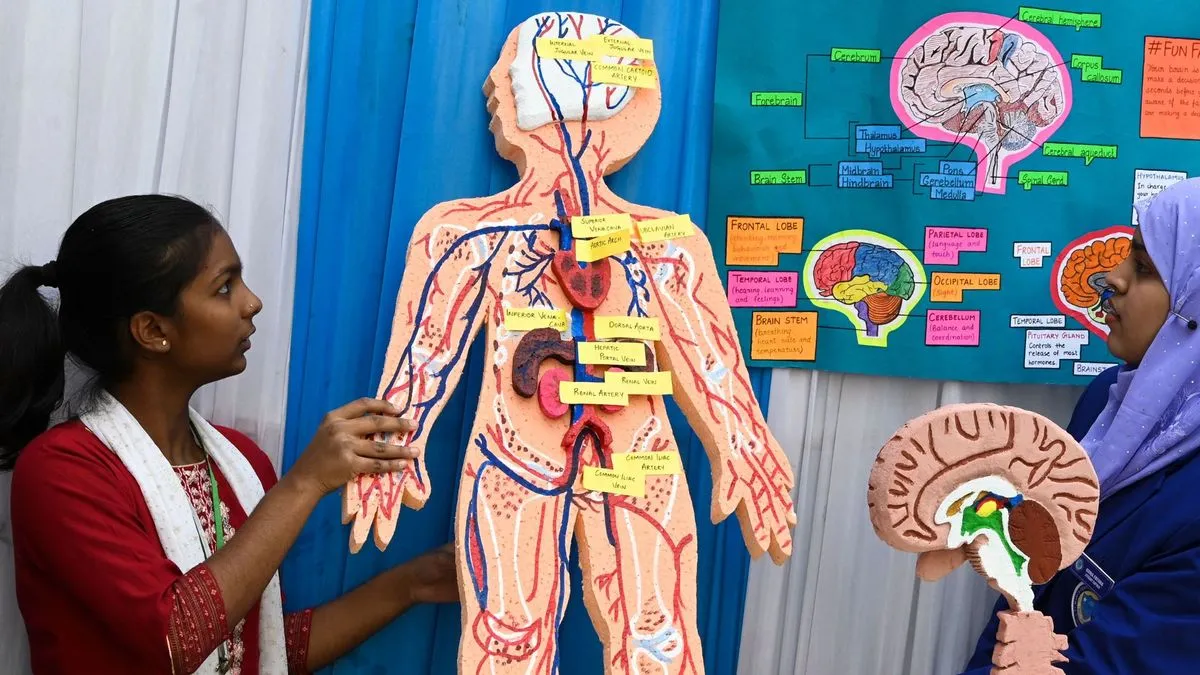What Is the Biggest Organ in the Human Body?

Human body is an intricate system of organs, which have life-sustaining functions. These organs go hand in hand in ensuring that the body is healthy and functioning by pumping blood, maintaining body temperature, and other functions. The skin is the largest organ among them but new researches have brought new controversies about this so called biggest organ. This article considers the largest organs of the human body, both solid and fluid-based and the adventurous developments of discovery of a possible new organ: the interstitium.
The Skin
The skin is known to be the largest body organ in the human body. It has several vital roles that maintain the body safe and stable. The skin is spread over the entire body surface area, and it comprises about 16 percent of your total body weight. Your skin is approximately 2 millimeters thick and it is not only a protective barrier, but also an important element of temperature regulation, delivery of sensory information, and storage of essential nutrients such as water, fat, and vitamin D.
Your body is safeguarded against the environmental risks like germs, sun radiation and pollution by the skin. It also assists in maintaining the body temperature by sweating and widening of blood vessels. Have you ever gotten a sunburn or been bitten by an insect? Then you are quite aware of how sensitive your skin is to outside influences, which indicate the feelings of pain, temperature, and touch.
The Interstitium
In 2018, a revolutionary research brought into question whether the skin remains the largest organ in the body. A structure that was previously unrecognised was discovered by researchers called the interstitium, a network of fluid-filled spaces that is held together by connective tissue, and which may turn out to be the largest organ in the body.
The interstitium is a system of fluid-containing spaces beneath the surface of the skin, in connective tissues such as fascia, and the lining of organs such as lungs, digestive tract and urinary tract. It also surrounds blood vessels and arteries. The body lymph fluid is mainly supplied by the interstitium, which is crucial in the immune system.
The interstitium’s purpose extends beyond fluid storage. It serves as a shock absorber to prevent the tissues against the normal movement of organs, e.g. when the gastrointestinal tract contracts during the digestive process. In addition, it is involved in inflammatory diseases and cancer, which implies that it possesses other functions that remain to be discovered. Provided it is considered an organ, interstitium would be the 80th organ in a human body and, according to some estimates, it may even be bigger than the skin itself.
The Liver
Although the skin and interstitium may be the most discussed organs when it comes to size, internal solid organs are also important to the body, in order to sustain its functions. The liver is the largest solid internal organ of the human body. The liver weighs about 3 to 3.5 lbs (1.36 to 1.59 kilograms) and is football-shaped and sized, lying just under the rib cage on the right side of the abdomen.
The liver has numerous essential functions including detoxification of the blood, production of bile, storage of excess glucose in the form of glycogen, and formation of protein factors necessary for blood clotting. The liver holds about a pint of blood at any one time which tells of a busy liver that works in streaming blood throughout the entire body.
Other Major Organs in the Body
The human body contains a variety of large organs, each playing a unique and irreplaceable role. After the liver, the following organs are considered the largest solid internal structures:
Brain
The brain weighs just 3lbs (1.36) kg and is known as the control centre of the body. It processes information, deciphers sensations and regulates behavior. The brain is about the size of two fists pressed together, and it is home to nearly 100 billion neurons, which form trillions of connections that enable the brain to communicate with the body.
The brain is split into two hemispheres, both responsible for doing their own thing. But that’s your left, logic and words and the right for creativity and spacial.. The brain is 2 percent of the body’s weight and requires 20 percent of its energy — more than any other organ during any state and even while we sleep, it is constantly processing information.”
Lungs
The lungs are the human body’s third largest organs and weigh only 2.2 pounds (1 kilogram). Together, they function to oxygenate blood and remove carbon dioxide. Lungs have an enormous surface area, comparable to the size of a tennis court, for the exchange of gases needed for respiration.
Lungs and heart work together to supply all of the body’s cells with oxygen. While the right lung is larger than the left because it has to make room for the heart, both lungs can hold 6 liters of air — or about 6 liters holds about 3 of those 2-liter soda pop bottles you get.
Heart
The other very important organ in the body is the heart, even if not the biggest of them all, but in pumping blood it is the leader. The heart is about 10 ounces (280 grams) — about the size of two fists held together. The heart sits between the lungs, a little to the left, and actually does something around 1.5 gallons of the work of blood pumping per minute. This vital task makes sure that the cells get the oxygen and nutrients they need from the blood and excrete waste products.
Kidneys
One of the largest organs in the human body is the kidney, each being four to 4.7 inches (10 to 12 cm) long. The kidneys act to filter waste products and excess fluid in the blood and excrete it in the form of urine. Each kidney contains about 1 million filtering units and together, they filter 200 quarts of fluid each day and produce 2 quarts of urine.
Conclusion
Although the skin was always viewed as the largest organ of the human body, the interstitium discovery has brought new opportunities to study human anatomy. This system of fluidic spaces can challenge our conventional ways of thinking and, in the event that it is classified as an organ, can alter how we view the internal structure of the body.
But as medical research continues, we may find that we have more organs in our bodies that we have not found. But for now skin and liver and even a brain and lungs, another heart, a pair of kidneys continue to occupy the stage, vital in keeping the human body alive and functioning.
If (huge “if”) knowledge of these “organs” (large and small) can be said to exist, then what a terribly complex body we inhabit and, perhaps, how we should care for our health because they all have irreplaceable roles in life itself.
FAQs
1. What is the largest organ in the human body?
The largest organ in a human body is traditionally viewed as the skin. It envelopes the whole body and constitutes approximately 16 percent of the total body mass of a human being.
2. What is interstitium and what does it have to do with organs?
Interstitium is a system of fluid-filled spaces that are connected to the connective tissue. It is distributed all over the body and has significant effects in tissue protection and the formation of lymph fluid. The latest studies indicate that it may be the largest organ in the body though this is a disputed scientific topic.
3. What functions does the skin perform?
Skin acts as a shield against the environmental hazards like germs and UV radiation, it maintains the temperature balance in the body, stores water and fat, and serves as a source of sensory information.
4. What is the largest solid internal organ?
Liver is the biggest solid internal organ. It is about 3-3.5 pounds in weight and is the most important organ in the detoxification of blood, bile formation and storage of nutrients.
5. How large are the brain and lungs?
The brain is the control centre of the body and weighs approximately 3 pounds and it processes information and controls behaviour. The third largest organs are the lungs which are made up of 2.2 pounds and are concerned with the oxygenation of blood.
6. Can the interstitium be classified as an organ?
The interstitium has not yet gained acceptance as a universal organ although it plays an important role in storing fluid and protecting the tissues. More research should be conducted to find out its entire role and boundaries.
7. How does the liver support the body’s functions?
The liver detoxifies the blood, produces bile to aid in digestion of food, stores surplus glucose and regulates blood clotting. It plays an imperative role in body detoxification and maintaining the metabolism in equilibrium.
8. What is the role of the heart in human body?
Blood pumps around the body and supplies oxygen and nutrients to the cells and removes waste products. It also cooperates with the lungs to enable breathing and also make sure that the cells of the body get the nutrients needed to perform their roles effectively.



